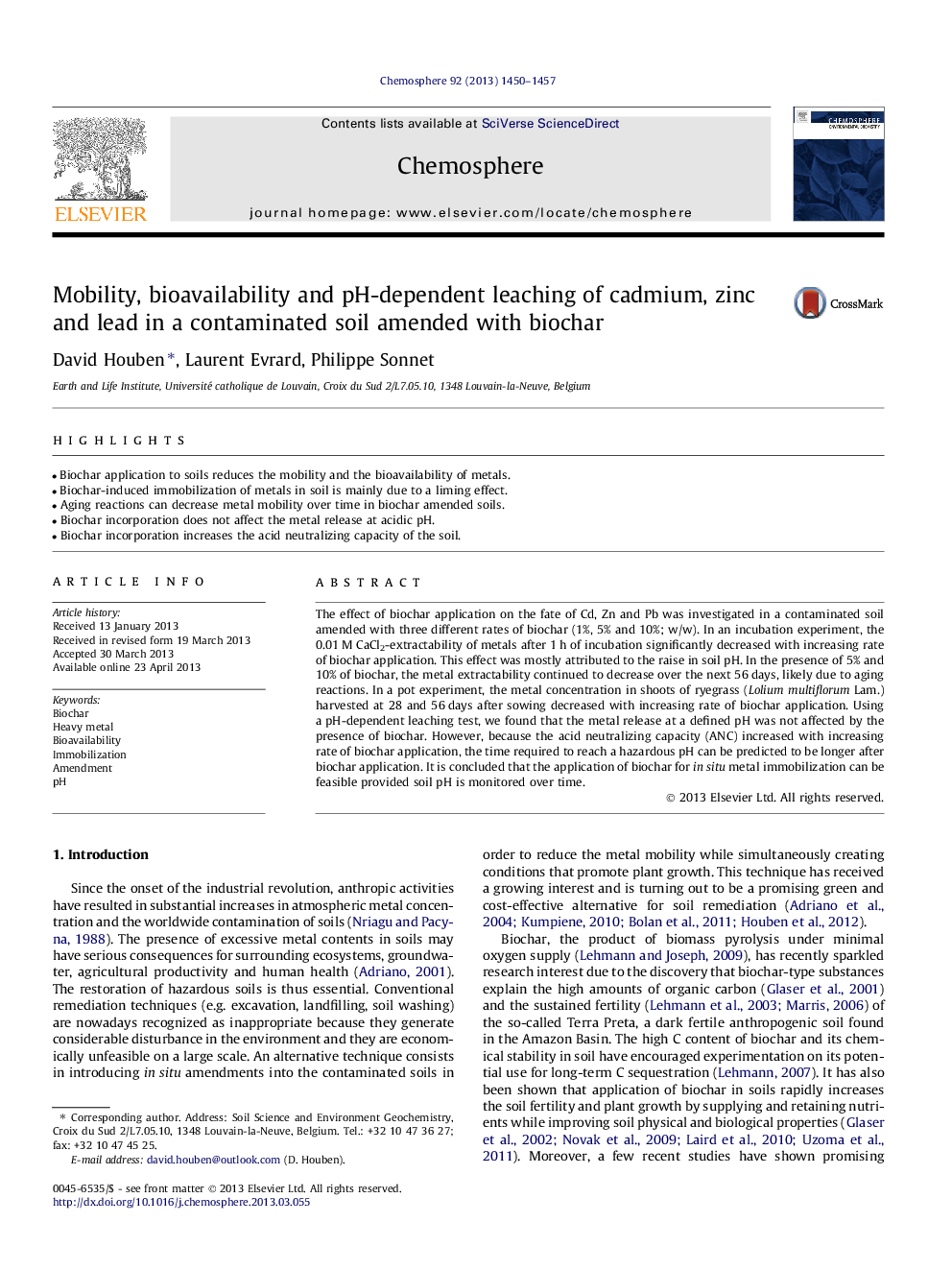| Article ID | Journal | Published Year | Pages | File Type |
|---|---|---|---|---|
| 6310484 | Chemosphere | 2013 | 8 Pages |
Abstract
The effect of biochar application on the fate of Cd, Zn and Pb was investigated in a contaminated soil amended with three different rates of biochar (1%, 5% and 10%; w/w). In an incubation experiment, the 0.01Â M CaCl2-extractability of metals after 1Â h of incubation significantly decreased with increasing rate of biochar application. This effect was mostly attributed to the raise in soil pH. In the presence of 5% and 10% of biochar, the metal extractability continued to decrease over the next 56Â days, likely due to aging reactions. In a pot experiment, the metal concentration in shoots of ryegrass (Lolium multiflorum Lam.) harvested at 28 and 56Â days after sowing decreased with increasing rate of biochar application. Using a pH-dependent leaching test, we found that the metal release at a defined pH was not affected by the presence of biochar. However, because the acid neutralizing capacity (ANC) increased with increasing rate of biochar application, the time required to reach a hazardous pH can be predicted to be longer after biochar application. It is concluded that the application of biochar for in situ metal immobilization can be feasible provided soil pH is monitored over time.
Related Topics
Life Sciences
Environmental Science
Environmental Chemistry
Authors
David Houben, Laurent Evrard, Philippe Sonnet,
